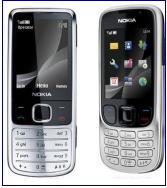Honda's Insight hybrid stalls in sales race with Toyota's Prius
Author: M Abdul Rehman // Category:
The Japanese automaker had high hopes for the retooled Insight. Instead, all it has delivered is a flurry of bad reviews and four months of dismal sales.
Throughout the country, Americans bought 2,079 Insights in June, bringing total sales of the streamlined hatchback since March to 7,524, according to Autodata Corp. At that rate, Honda will sell less than a third of its goal of 90,000 in the first 12 months.
By comparison, the higher-priced Prius was snapped up by 12,998 drivers last month. Since March, Toyota has sold 40,398 of the gas-sippers.
The poor sales figures are all the more humbling because Honda was the first automaker to bring hybrids to the U.S. a decade ago, with an earlier version of the Insight. Yet although Honda products almost always score well with consumers and car enthusiasts, it just can't seem to get green right.
Weak sales forced the Japanese automaker to abandon an earlier two-seat Insight. Its powerful six-cylinder Accord hybrid had unimpressive gas mileage and was killed after three years. Combined, the two vehicles mustered scarcely 45,000 deliveries worldwide.
Meanwhile, the hybrid version of its popular Civic sedan, which Honda says it originally introduced to battle the Prius, has logged just a fifth as many sales as its rival.
"Honda just hasn't had a cogent hybrid strategy at all," said Eric Noble, president of Car Lab, a product planning and research firm.
Noble isn't sure why Honda has stumbled, but what is clear is that other automakers are gaining ever-larger footholds in the hybrid market. Ford Motor Co. is making huge strides thanks to its highly regarded new Fusion hybrid, which, despite a price tag nearly $10,000 more than the Insight's, had June sales on par with the Honda offering. General Motors Co. and Nissan Motor Co. both offer hybrids. Germany's Daimler, maker of Mercedes-Benz, and even South Korea's Hyundai Motor Co. are preparing to enter the hybrid race.
Toyota remains the king, with a fleet of six hybrids including Lexus models, and the hybrid-only Lexus HS sedan on the way. Honda's next hybrid offering, meanwhile, is a head scratcher: the CR-Z, a two-seat sports coupe aimed at one of the smallest-volume segments of the market.
Honda contends that it never intended for the Insight to compete with the Prius, which has logged more than 1.25 million sales worldwide since it first went on sale in Japan in 1997.
Instead, spokesman Chris Martin said, Honda specifically targeted the Insight at a lower price point -- it starts at $19,800 compared with $22,000 for the Prius -- in hopes of winning over a new segment of penny-pinching would-be hybrid buyers.
Honda's annual sales expectations of 90,000 units are half those of Toyota's for the Prius. But with gasoline prices low right now, Martin said that price-conscious buyers are waiting on the sidelines.
"Insight is the value hybrid, whereas the Prius is designed to be more whiz-bang," he said.
Martin contends that the two cars have little in common, and Consumer Reports appears to agree. It rated the Insight second to last among small hatchbacks in its August issue, behind the Chrysler PT Cruiser and the Scion Xd. The magazine critiqued the Insight's handling, lack of interior room and cargo space, calling it a "noisy car with a stiff ride and clumsy handling." The Prius, meanwhile, ranked third.
And while the Insight gets a respectable 41 mpg, the new Prius reaches 50 mpg -- thanks in part to its more advanced hybrid technology. The Prius has a powerful electric motor that by itself can propel the car at speeds of up to 34 mph. The Honda, on the other hand, uses the electric motor as an assist; its gas engine is always running when the car is in motion. The Prius also has more horsepower, seating room and trunk space, plus snazzy features like a solar-powered sunroof.
"Honda has learned from its mistakes in the hybrid market, but maybe it's learned the wrong lessons," said Jake Fisher, senior engineer at Consumer Union, which publishes Consumer Reports.


















